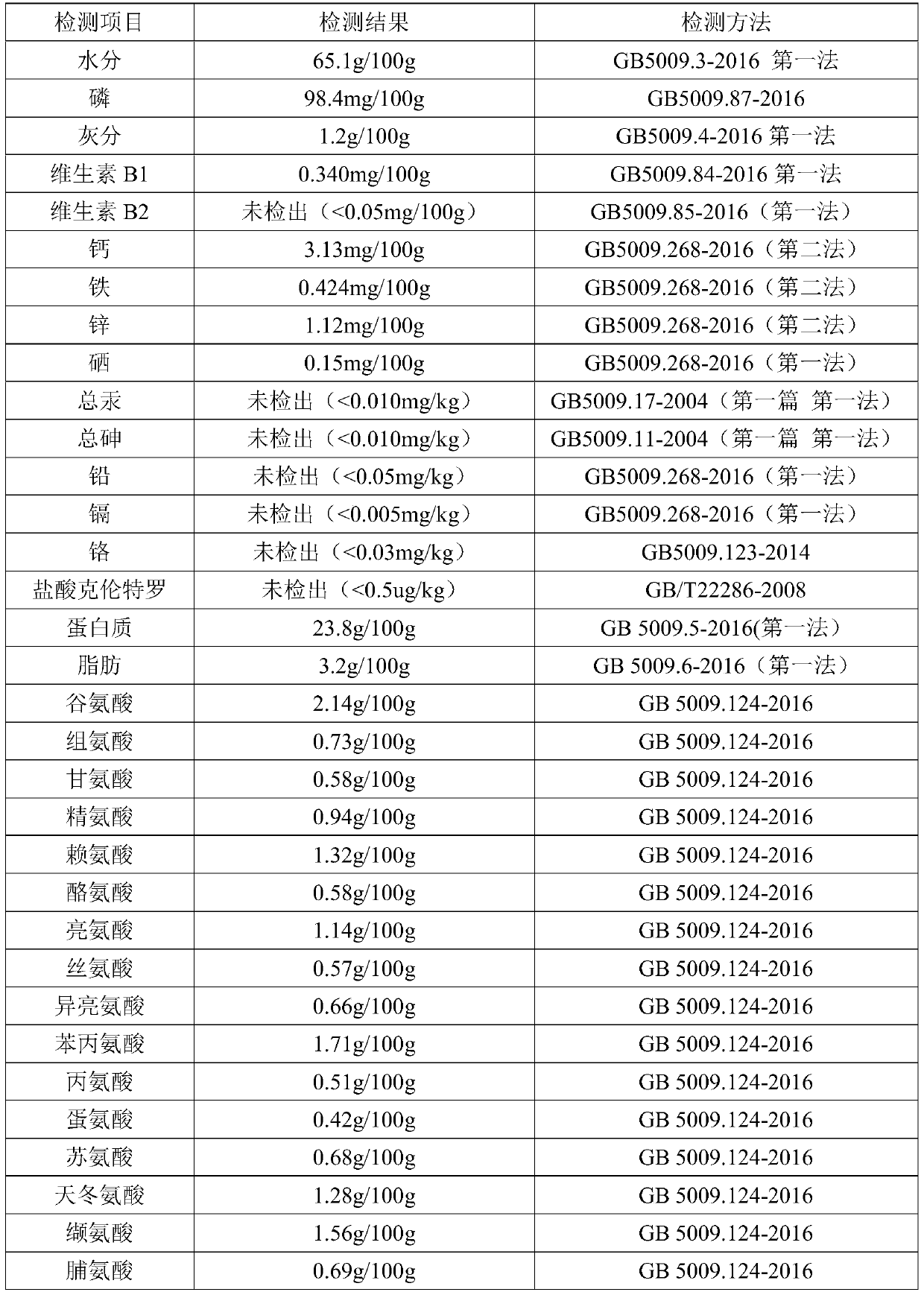Method of using broussonetia papyrifera as vegetable protein for manufacturing feed
A plant protein and production method technology, applied in the field of aquaculture, can solve problems such as failure to achieve health care effects, and achieve the effects of nutrition promoting lush plant growth, rich nutrition, and improving the digestive ability of animals themselves
- Summary
- Abstract
- Description
- Claims
- Application Information
AI Technical Summary
Problems solved by technology
Method used
Image
Examples
Embodiment 1
[0028] (1) Mechanical shredding: harvesting in the early stage, cutting the mulberry tree into small sections of about 3cm-5cm;
[0029] (2) Carry out aerobic fermentation: first cultivate the strains, and the cultivation process is as follows: after the sterility inspection, take the pure Aspergillus niger strain and put it into a test tube for cultivation and propagation, then transfer it to a triangular flask for cultivation, and finally carry out large container expansion. Propagation and cultivation, the number of live bacteria checked to reach more than 1 billion per milliliter can be used for inoculation, and the multivariate Trichoderma, Bacillus licheniformis, and Bacillus subtilis were respectively cultivated at the same time;
[0030] Prepare 500Kg of shredded mulberry materials, spray 1.25L liquid strains with a mechanical device and mix dry and wet evenly in a mechanical material mixing tank. Bacillus licheniformis and Bacillus subtilis, in the process of aerobic ...
Embodiment 2
[0037] (1) Mechanical shredding: harvesting in the early stage, cutting the mulberry tree into small sections of about 3cm-5cm;
[0038] (2) Carry out aerobic fermentation: first cultivate the bacterial classification, the cultivation process is, after sterility inspection, take pure Aspergillus niger strain and put it into the test tube for cultivation and propagation, then transfer to the Erlenmeyer flask for cultivation, and finally carry out large container expansion. Propagation and cultivation, the number of live bacteria checked to reach more than 1 billion per milliliter can be used for inoculation, and Trichoderma viride, Bacillus subtilis, and Lactobacillus plantarum were respectively cultivated at the same time;
[0039]Prepare 500Kg of shredded mulberry material, spray 1.25L liquid strains with a mechanical device and mix dry and wet evenly in a mechanical material mixing tank. The liquid strains are 1L Aspergillus niger, Trichoderma viride and 0.25L subtilis Bacil...
Embodiment 3
[0045] (1) Mechanical shredding: harvesting in the early stage, cutting the mulberry tree into small sections of about 3cm-5cm;
[0046] (2) Carry out aerobic fermentation: first cultivate the strains, and the cultivation process is as follows: after the sterility inspection, put the pure fungal rotting wood strains into test tubes for cultivation and propagation, then transfer them to a triangular flask for cultivation, and finally carry out large container expansion. Propagation and cultivation, the number of live bacteria checked to reach more than 1 billion per milliliter can be used for inoculation, and at the same time, Aspergillus migeri, Bacillus subtilis, and Lactobacillus plantarum were respectively cultivated;
[0047] Prepare 500Kg of shredded mulberry materials, spray 1.25L liquid strains with a mechanical device, and mix them evenly in a mechanical material mixing tank. 0.35L Bacillus subtilis and Lactobacillus plantarum, in the process of aerobic fermentation, d...
PUM
 Login to View More
Login to View More Abstract
Description
Claims
Application Information
 Login to View More
Login to View More - R&D
- Intellectual Property
- Life Sciences
- Materials
- Tech Scout
- Unparalleled Data Quality
- Higher Quality Content
- 60% Fewer Hallucinations
Browse by: Latest US Patents, China's latest patents, Technical Efficacy Thesaurus, Application Domain, Technology Topic, Popular Technical Reports.
© 2025 PatSnap. All rights reserved.Legal|Privacy policy|Modern Slavery Act Transparency Statement|Sitemap|About US| Contact US: help@patsnap.com



